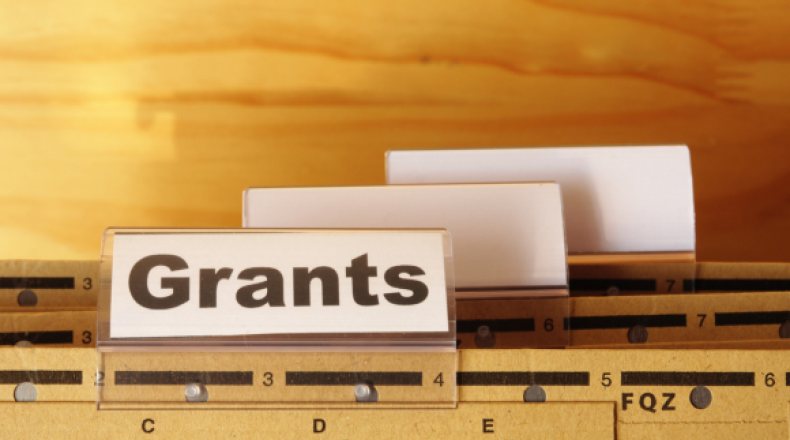AP Perspectives—The Big Gamble: 5 Mistakes to Avoid in Building Your Grants Program

Before I ventured into the world of freelance grant writing and consulting, I was fortunate to have worked for a well-regarded, mature arts and culture organization in our community. That experience taught me a lot. Over the 40 years since they’d first opened their doors, the organization had steadily built a broad and solid base of loyal, reliable corporate and foundation funders that ultimately would make up more than a third of their annual philanthropic revenue.
As their VP of corporate & foundation relations, I saw first-hand many reasons why they were successful, and learned best practices regarding grant strategy, revenue projections, and funder stewardship. But their grant success didn’t happen overnight.
Now as a consultant, I see far too many nonprofits wanting to take shortcuts in building or growing their grants programs. Enticed by potentially big money, they don’t invest the time needed to build a truly sustainable base of grant support. Some choose to skip proven grant strategies, while others dismiss incremental wins and other metrics of progress, or downplay the critical role of relationship building and stewardship. Driven to land a mega-grant from the likes of Bill Gates or the Ford Foundation, they don’t (or won’t) recognize that by growing a wide base of grant funders at all levels, they’ll become much stronger and more sustainable in the long run. Put simply—don’t try to skip the line for the big win.
Here are 5 key mistakes to avoid when building or growing your grants program:
- Only going for big funders
I get it. Every grant writer’s dream is to land the big, $1M+ grants from the large foundations. Yes, it’s a tremendous rush, but those wins are few, and typically take many months of relationship building and conversations with the funder to make sure your nonprofit has the capacity to steward a grant at that size. Don’t get me wrong, if you do find some high-level giving prospective funders that strongly align with your mission and programs, by all means, start building the relationship, but just don’t bank solely on these mega funders for your grants program, and realize that it’s a long-term process with them.
- Not building a wide base of funders
Hand in hand with mistake #1, not building a wide base of grant funders at various levels is another major pitfall to avoid. Just as with individual donors and annual giving, having a broad base of grant funders in the low to mid-level ranges is key to your sustainability, and to a strong grants program for the long haul. Don’t dismiss small to midsize grants as a waste of time. You're only shooting yourself in the foot if you do.
For example, knowing that you have 30 reliable funders in the $10K-$50K range each year is much more assuring than counting on a few mega funders who have never given to you. Build a diverse base of grant funders who love you and keep coming back. They will be your lifeline.
- Not prioritizing renewals or lapsed funders
Just as with individual donors, it’s a more efficient strategy to focus on renewing current funders and bringing back lapsed funders than putting most of your time towards pursuing new funders. As the lowest hanging fruit, grant funders who gave to you last year, or lapsed funders who previously gave to you, are more likely to give again, if you’ve stewarded them well. Even if they’re in a lower giving range, don’t neglect renewing them in the pursuit of bigger, newer dollars. You don’t have the luxury. Moreover, don’t discount them if they didn’t award the full requested amount. There are a million reasons why this sometimes happens. Often, it can be a test to see how you steward a first-time grant, and if you do it well, can lead to much bigger gifts. Don’t assume, and be grateful that you got the grant.
- Ignoring other metrics of success
Another huge mistake I’ve seen is when nonprofits only focus on the bottom line—how much did we raise from grants this year? Yes, the total grant funding secured is clearly important, but there are many other metrics of progress to look at to really assess the growth of your grants program. Here are a few to measure:- How many grants did we submit this year vs. last year?
- Did our percentage of renewed grants increase?
- How many funders increased their grant award amounts this year and by how much?
- How many lapsed funders did we reactivate this year?
- How many new grant funders did we have this year? New relationships built?
- Not being diligent with stewardship
It should go without saying, but if you truly want to build and sustain a strong grants program, funder stewardship is non-negotiable. Full stop. Just as with individual donors, you really need to keep in touch with your grant funders throughout the year, deliver what you promised, and look for ways to go the extra mile. Take grant reporting seriously, and if they don’t require a report, send a courtesy report anyway. Leverage opportunities to send success stories or photos year-round. This can often make you stand out among other nonprofits that don’t bother to make the effort. The bottom line is if you neglect funder stewardship, you’ll never have a strong and sustainable grants program, and are you really worthy of grant funding?


 Laine Seaton, is the founder and principal of
Laine Seaton, is the founder and principal of